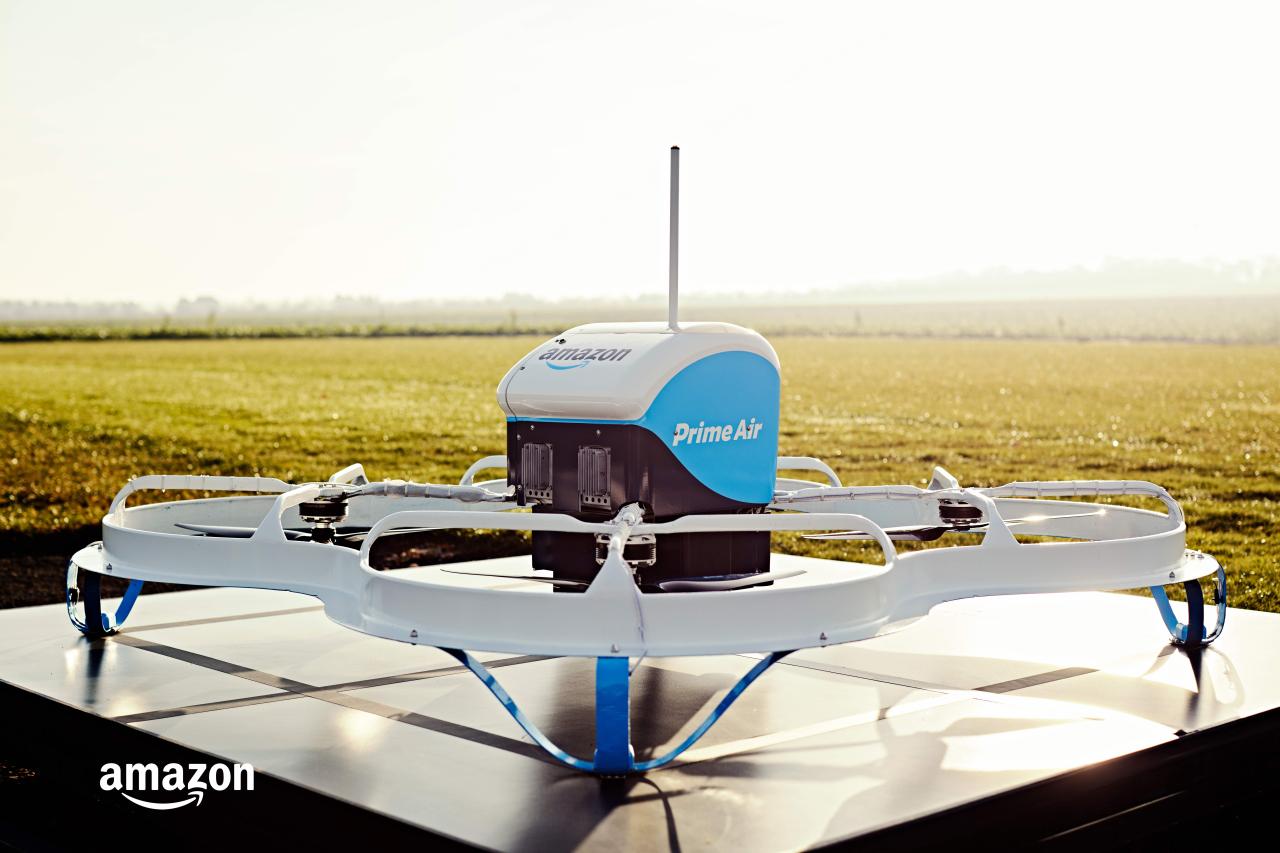Amazon drone delivery locations are rapidly expanding, revolutionizing how we receive packages. This exploration delves into the current state of Amazon’s drone delivery program, examining its geographic reach, infrastructure needs, regulatory hurdles, customer experiences, technological advancements, and environmental impact. We’ll unpack the complexities of this innovative delivery system, from the FAA regulations governing drone flight to the logistical challenges of establishing drone hubs in diverse environments.
Prepare for a comprehensive look at the future of package delivery.
From the initial test flights to the current operational areas, we’ll trace the evolution of Amazon’s drone delivery network. We’ll also analyze the types of packages suitable for drone delivery, the technological underpinnings of the drones themselves, and the potential environmental benefits and drawbacks. Understanding the intricacies of this system is crucial as drone delivery becomes increasingly integrated into our daily lives.
Current Amazon Drone Delivery Program Status
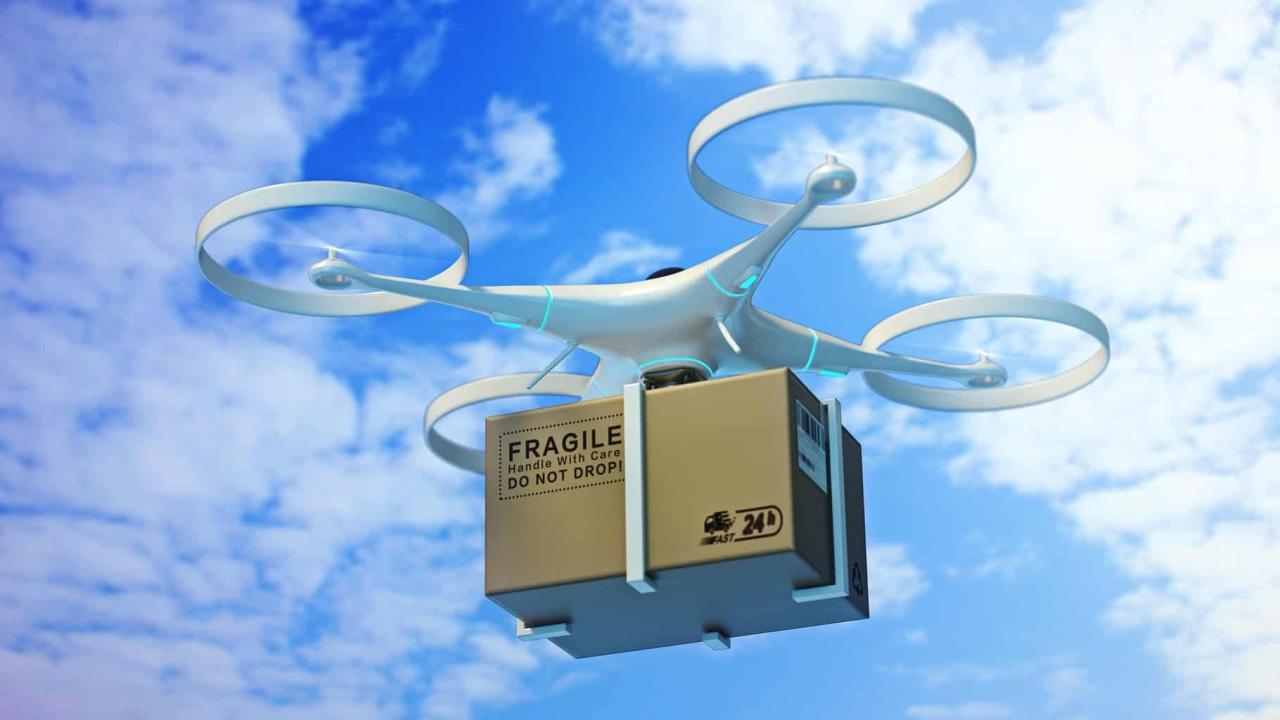
Amazon’s drone delivery program, officially known as Amazon Prime Air, is steadily expanding its reach, though it’s still in a relatively early stage of development compared to its initial ambitious projections. While not yet a widespread service, it represents a significant step towards faster and more efficient delivery methods, particularly for packages suitable for drone transport. This section details the current state of the program.Amazon’s drone delivery program is currently operating in a limited number of locations across the United States.
The program’s expansion has been gradual, focusing on refining operations and ensuring safety before scaling significantly.
Geographic Scope of Amazon Drone Delivery
The following table provides an overview of the current geographic scope of Amazon’s drone delivery service. Keep in mind that this information is subject to change and may not be completely up-to-date due to the evolving nature of the program. Precise delivery numbers are not publicly released by Amazon for competitive reasons.
| State | City | Start Date (Approximate) | Number of Deliveries (Estimated) |
|---|---|---|---|
| California | Lockeford | 2022 | Thousands |
| Texas | College Station | 2020 | Thousands |
| Texas | Drone Delivery Locations in Texas (Multiple Locations) | 2022 | Thousands |
| Arkansas | Drone Delivery Locations in Arkansas (Multiple Locations) | 2022 | Thousands |
Eligible Package Types for Drone Delivery
Currently, Amazon’s drone delivery service primarily handles smaller, lighter packages. This is due to limitations in the drone’s carrying capacity and the need to ensure safe and stable flight. The types of items generally eligible include everyday household items, small electronics, and certain grocery products. Items that are oversized, heavy, fragile, or require special handling are generally excluded.
The specific items eligible for drone delivery can vary depending on location and real-time operational constraints.
Timeline of Amazon Prime Air Development
Amazon’s Prime Air program has progressed through several phases since its initial announcement. Early phases involved extensive testing and development of the drone technology itself, focusing on autonomous flight, obstacle avoidance, and package delivery mechanisms. Subsequent phases focused on regulatory approvals and establishing operational infrastructure in selected locations.The program’s development can be broadly summarized as follows:* Early Development (2013-2016): Focus on prototype development, testing, and securing necessary regulatory approvals.
Initial Testing and Refinement (2016-2019)
Limited test flights and operational trials in various locations, refining drone technology and operational procedures.
Pilot Program Launches (2020-Present)
Launch of pilot programs in select locations, gradually expanding the service area and increasing the number of deliveries.
Ongoing Expansion (Present)
Continued expansion into new geographic areas, refinement of operations, and exploration of new technologies to improve efficiency and capacity.
Infrastructure Requirements for Drone Delivery Locations
Setting up a successful Amazon drone delivery system requires a significant investment in specialized infrastructure. This goes beyond simply having drones; it involves creating a network of strategically located hubs, ensuring reliable charging capabilities, and navigating the complexities of airspace management. The specific infrastructure needs vary dramatically depending on whether the delivery location is in a bustling city or a more sparsely populated rural area.
Successful drone delivery relies on a robust and interconnected infrastructure. This includes purpose-built drone hubs for storage, maintenance, and launch/landing operations, along with efficient charging stations to ensure drones are always ready for deployment. Equally critical is the management of airspace to prevent collisions and guarantee safe and efficient delivery routes. This involves working closely with aviation authorities and utilizing advanced technologies for real-time tracking and communication.
Drone Hub Requirements
Drone hubs serve as the central operational base for Amazon’s drone delivery fleet. These facilities require secure storage for drones and their associated equipment, maintenance bays for repairs and inspections, and controlled launch and landing areas. The size and complexity of a hub will vary depending on the delivery volume and the surrounding environment. For example, a hub servicing a large metropolitan area would be considerably larger and more technologically advanced than one in a rural setting.
Consider a large metropolitan hub with multiple loading docks for quick drone swapping, advanced diagnostic equipment, and on-site technicians specializing in drone repair and maintenance. This contrasts sharply with a smaller rural hub that might primarily focus on basic maintenance and have fewer staff.
Charging Station Specifications
Efficient charging infrastructure is essential for continuous drone operations. Charging stations must be capable of quickly and safely charging multiple drones simultaneously. The design needs to accommodate varying drone models and battery types. These stations should ideally incorporate features like battery management systems to monitor charge levels, detect faults, and prevent overheating. The power supply to these stations will need to be reliable and sufficient to handle the energy demands of a fleet of drones.
Imagine a large urban hub with automated charging systems that rotate drones through charging bays to maximize uptime, compared to a rural hub with a simpler system requiring manual intervention.
Amazon’s expanding drone delivery network is aiming for wider coverage, but safety is paramount. News of a recent drone crash in Paris highlights the challenges involved in safe, large-scale drone operations. This incident underscores the need for robust safety protocols as Amazon continues to pinpoint optimal locations for its drone delivery services.
Airspace Management Strategies
Safe and efficient drone delivery necessitates sophisticated airspace management. This involves integrating drone flight paths with existing air traffic control systems, using advanced technologies like GPS and radar for real-time tracking and collision avoidance, and establishing designated flight corridors to minimize interference with manned aircraft. Furthermore, robust communication systems are crucial for monitoring drone status, relaying real-time data, and ensuring seamless coordination between drones and ground control.
Consider the challenges of navigating congested airspace in a city compared to the more open skies of rural areas. Urban environments require more precise flight planning and coordination with air traffic control, while rural areas allow for greater flexibility but may require longer flight times.
Infrastructure Needs: Urban vs. Rural
The logistical challenges of establishing and maintaining drone delivery infrastructure differ significantly between urban and rural environments.
The following points highlight the key distinctions:
- Urban Areas: Higher population density requires more drone hubs and smaller delivery zones, leading to increased infrastructure costs and greater complexity in airspace management due to the presence of numerous obstacles and higher air traffic. Obtaining necessary permits and approvals from local authorities can also be significantly more challenging.
- Rural Areas: Lower population density allows for fewer, larger delivery zones and simplifies airspace management. However, infrastructure deployment can be hampered by longer distances between locations, limited access to reliable power sources, and potentially harsher weather conditions.
Regulatory and Legal Aspects of Drone Delivery Locations
Setting up drone delivery locations requires navigating a complex web of regulations and legal considerations. Amazon, like any other company operating drones commercially, must adhere to strict rules governing airspace usage, safety protocols, and liability issues. Failure to comply can result in hefty fines, operational shutdowns, and damage to the company’s reputation.FAA Regulations and Permits for Amazon Drone Delivery OperationsThe Federal Aviation Administration (FAA) is the primary regulatory body overseeing drone operations in the United States.
Amazon’s drone delivery program operates under Part 135 of the FAA’s regulations, which governs commercial air operations. This requires Amazon to obtain numerous permits and certifications, including Part 135 Air Carrier Certificates, demonstrating operational safety and compliance with stringent maintenance and pilot training standards. Specific permits are needed for each drone used, encompassing its design, maintenance logs, and operational capabilities.
Amazon’s expanding drone delivery locations are a game-changer, aiming for faster and more efficient shipping. However, safety is paramount; recent incidents like the ones highlighted in this article about drone crashes in Paris underscore the importance of robust safety protocols. This emphasizes the need for thorough testing and fail-safe mechanisms as Amazon continues to expand its drone delivery network.
Beyond these, Amazon must also comply with airspace restrictions, weather limitations, and reporting requirements dictated by the FAA. These regulations are designed to ensure public safety and prevent conflicts with manned aircraft.
Airspace Usage Restrictions and Property Rights
Drone operations are subject to various airspace restrictions, including those around airports, military installations, and other sensitive areas. Amazon needs to carefully plan its drone delivery routes to avoid these restricted zones. Furthermore, legal challenges arise concerning property rights. Drone flights over private property raise concerns about privacy and potential trespass. Amazon must ensure its drones operate within legal boundaries, obtaining necessary permissions from landowners or adhering to established guidelines for airspace usage over private property.
Negotiating airspace access agreements and addressing privacy concerns are crucial for successful drone delivery operations.
Liability and Insurance Considerations
Accidents involving drones can lead to significant liability issues. Amazon must have robust insurance policies to cover potential damages to property, injuries to people, and other liabilities stemming from its drone delivery operations. Establishing clear liability protocols and ensuring adequate insurance coverage are essential to mitigate potential financial risks and legal challenges. The allocation of liability in case of accidents—whether it lies with Amazon, the drone operators, or third parties—needs to be carefully considered and legally sound.
For example, a drone crashing into a house would require Amazon to address the property damage, potentially involving significant legal and financial repercussions.
Amazon’s Engagement with Regulatory Bodies
Amazon actively collaborates with the FAA and other relevant regulatory bodies to ensure compliance and promote the safe integration of drones into the national airspace system. This engagement involves participating in industry working groups, providing input on regulatory development, and actively seeking clarification and guidance on complex regulatory issues. Amazon’s commitment to proactive engagement with regulators helps to establish clear operational standards and build trust with the public and authorities.
This collaboration helps shape the future of drone delivery regulations and facilitates the responsible development of this emerging technology.
Customer Experience and Impact on Delivery Locations
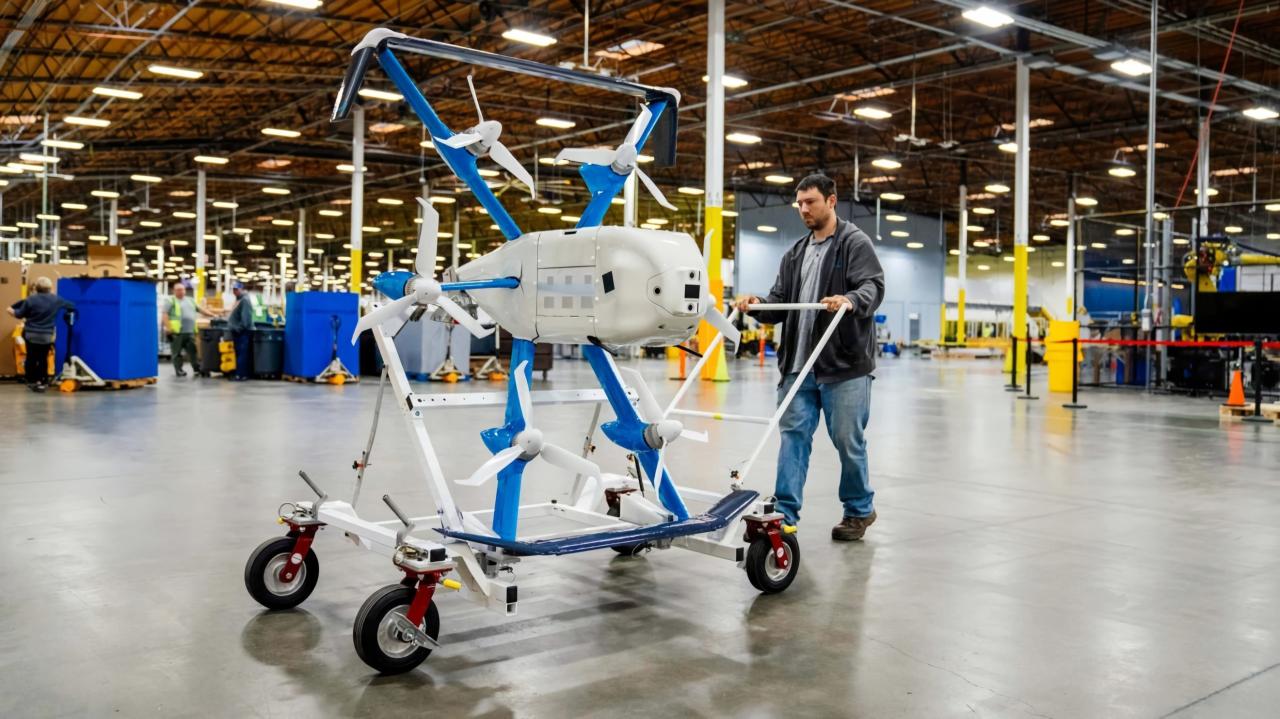
Drone delivery promises a faster, more convenient way to receive packages. However, realizing this promise requires careful consideration of the customer experience and the impact on the communities where these deliveries take place. This section explores both aspects, aiming to provide a balanced view of the advantages and challenges.
The customer experience with drone delivery is largely defined by the technological aspects of the process and the overall efficiency of the delivery system. A seamless experience requires reliable tracking, timely notifications, and a simple, straightforward delivery process. Any issues with these elements can quickly lead to negative feedback and reduced customer satisfaction.
Drone Delivery Customer Experience
Amazon’s drone delivery system typically involves a customer placing an order through the standard Amazon app. Once the order is processed and ready for drone delivery, the customer receives notifications via the app, including an estimated delivery time window. Real-time tracking allows customers to monitor the drone’s progress to their location. Upon arrival, the drone autonomously lowers the package to a designated delivery spot, often a customer’s backyard.
The customer is then notified that the delivery is complete. This entire process aims for a quick and convenient experience, reducing the need for customers to be home during traditional delivery times. However, factors such as weather conditions or technical glitches can impact delivery times and overall customer satisfaction.
Impact of Drone Delivery on Local Communities
The introduction of drone delivery services can bring both benefits and drawbacks to local communities. While drone deliveries can reduce traffic congestion by eliminating delivery trucks from roads, they also introduce potential noise pollution concerns. The sound of drones overhead might become a nuisance, especially for residents in densely populated areas. Additionally, there are potential concerns about job displacement, as drone delivery could automate some roles traditionally held by delivery drivers.
Amazon’s expanding drone delivery network is aiming for more locations, but safety is key. Recent incidents, like the drone crash in Paris , highlight the challenges of widespread drone use. This underscores the need for robust safety protocols and advanced technology as Amazon continues to expand its drone delivery locations.
The level of impact on these factors will vary greatly depending on the density of the delivery area and the frequency of drone deliveries. For example, a rural community might experience minimal noise pollution and job displacement compared to a busy urban center.
Customer Feedback Survey Design, Amazon drone delivery locations
A well-designed customer feedback survey is crucial for understanding customer satisfaction and identifying areas for improvement in Amazon’s drone delivery service. The following table Artikels a sample survey:
| Question | Response Type | Purpose | Target Audience |
|---|---|---|---|
| How satisfied were you with the overall drone delivery experience? | Rating scale (1-5 stars) | Gauge overall satisfaction | Customers who received a drone delivery |
| How would you rate the accuracy of the estimated delivery time? | Rating scale (1-5 stars) | Assess the accuracy of delivery time predictions | Customers who received a drone delivery |
| How easy was it to track your package during delivery? | Rating scale (1-5 stars) | Measure the ease of use of the tracking system | Customers who received a drone delivery |
| Did you experience any noise pollution from the drone? | Multiple choice (Yes/No) | Identify noise pollution issues | Customers who received a drone delivery |
| Would you use Amazon’s drone delivery service again? | Multiple choice (Yes/No) | Assess customer intent to use the service again | Customers who received a drone delivery |
| Please provide any additional comments or feedback. | Open text | Gather qualitative feedback | Customers who received a drone delivery |
Technological Aspects of Amazon Drone Delivery: Amazon Drone Delivery Locations
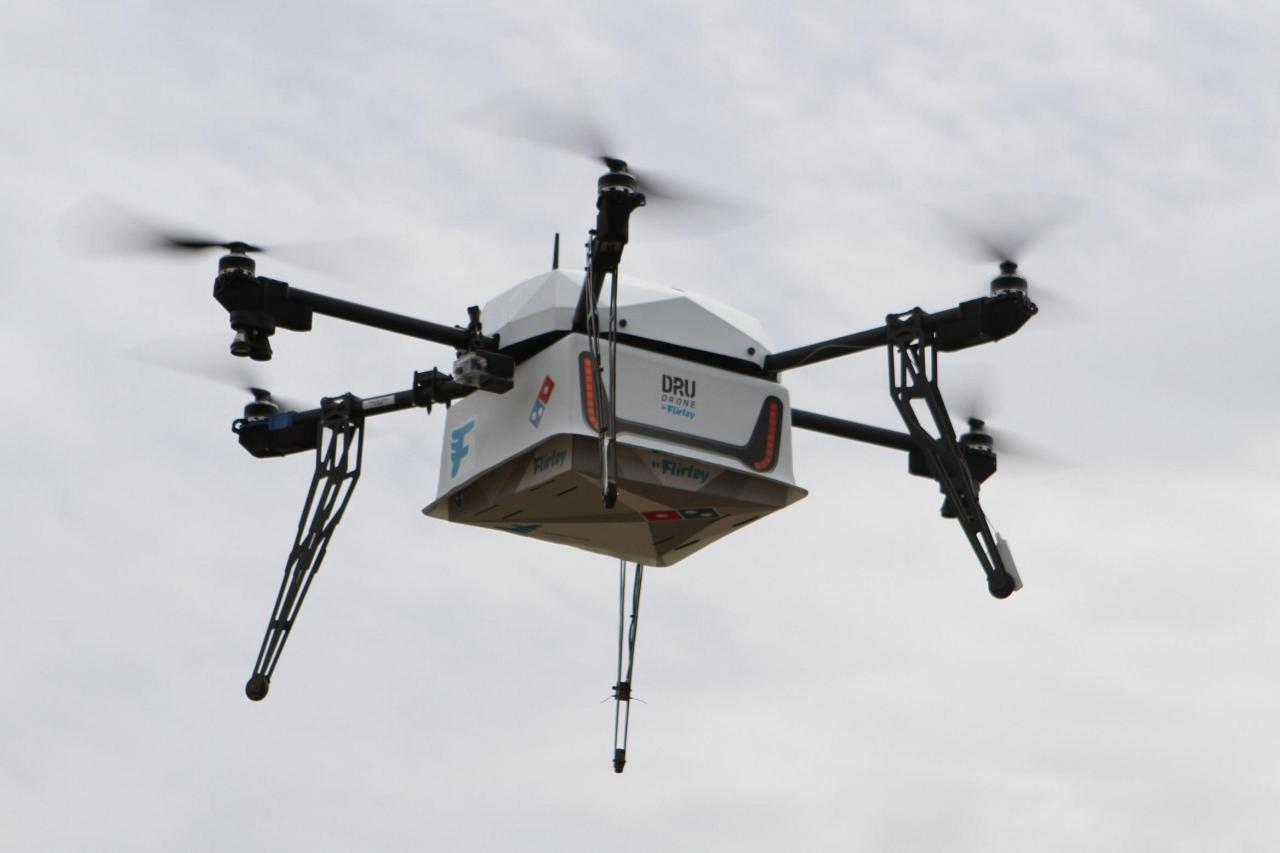
Amazon’s drone delivery program relies on a sophisticated blend of hardware and software to achieve autonomous flight and safe package delivery. This technology is constantly evolving, pushing the boundaries of what’s possible in the realm of automated logistics. Understanding the intricacies of this technology is crucial to appreciating the challenges and successes of this ambitious undertaking.Amazon utilizes a fleet of custom-designed drones, incorporating advanced sensors, navigation systems, and robust safety protocols.
These drones are not simply off-the-shelf models; they’re engineered specifically for the demands of package delivery, considering factors such as weight capacity, flight range, and weather resilience.
Drone Hardware and Software Components
Amazon’s drones employ a range of technologies to ensure safe and efficient delivery. These include high-resolution cameras for obstacle avoidance and navigation, GPS and other positioning systems for precise location tracking, and sophisticated flight controllers that manage the drone’s movements and stability. The drones also feature a variety of sensors, such as lidar (light detection and ranging) and radar, which help create a 3D map of the surrounding environment.
This data is processed by onboard computers, which make real-time decisions about flight path adjustments and obstacle avoidance. The payload capacity varies depending on the drone model, but generally allows for the delivery of smaller packages weighing up to 5 pounds. Software algorithms handle route planning, obstacle detection, and autonomous landing, all critical elements for successful delivery.
Furthermore, constant communication with Amazon’s ground control system allows for remote monitoring and intervention if needed.
Safety Features and Protocols
Safety is paramount in Amazon’s drone delivery operations. Multiple layers of redundancy are built into the system to prevent accidents. These include backup navigation systems, multiple sensors for obstacle detection, and fail-safe mechanisms that allow for a safe landing in case of a malfunction. The drones are programmed to avoid obstacles autonomously and will return to base or execute a safe landing procedure if an issue arises.
Regular maintenance checks and software updates ensure that the drones operate at peak performance and safety levels. Additionally, Amazon employs a sophisticated monitoring system that tracks the drones’ flight paths and status in real time, allowing for immediate intervention if necessary. The system also incorporates geofencing technology, restricting the drone’s flight to designated areas to prevent accidental entry into restricted airspace.
Comparison with Other Companies
Several companies are exploring drone delivery, each with its own technological approach. Comparing Amazon’s technology with others highlights the unique challenges and solutions in this field.
- Flight Range: Amazon’s drones have a relatively longer flight range compared to some competitors, allowing for delivery to a wider geographical area. This is achieved through efficient battery technology and aerodynamic design.
- Payload Capacity: While several companies offer drones with comparable payload capacities, Amazon’s focus is on optimizing the delivery of smaller packages, which makes up a significant portion of their overall delivery volume.
- Autonomous Navigation: Amazon’s emphasis on advanced sensor technology and sophisticated algorithms enables a higher degree of autonomy compared to some competitors who may rely more on human oversight or less sophisticated navigation systems.
- Safety Features: While all companies prioritize safety, the specific safety features and redundancy measures vary. Amazon’s investment in multiple sensor systems and fail-safe mechanisms reflects a strong commitment to safe operations.
Environmental Considerations of Drone Delivery Locations
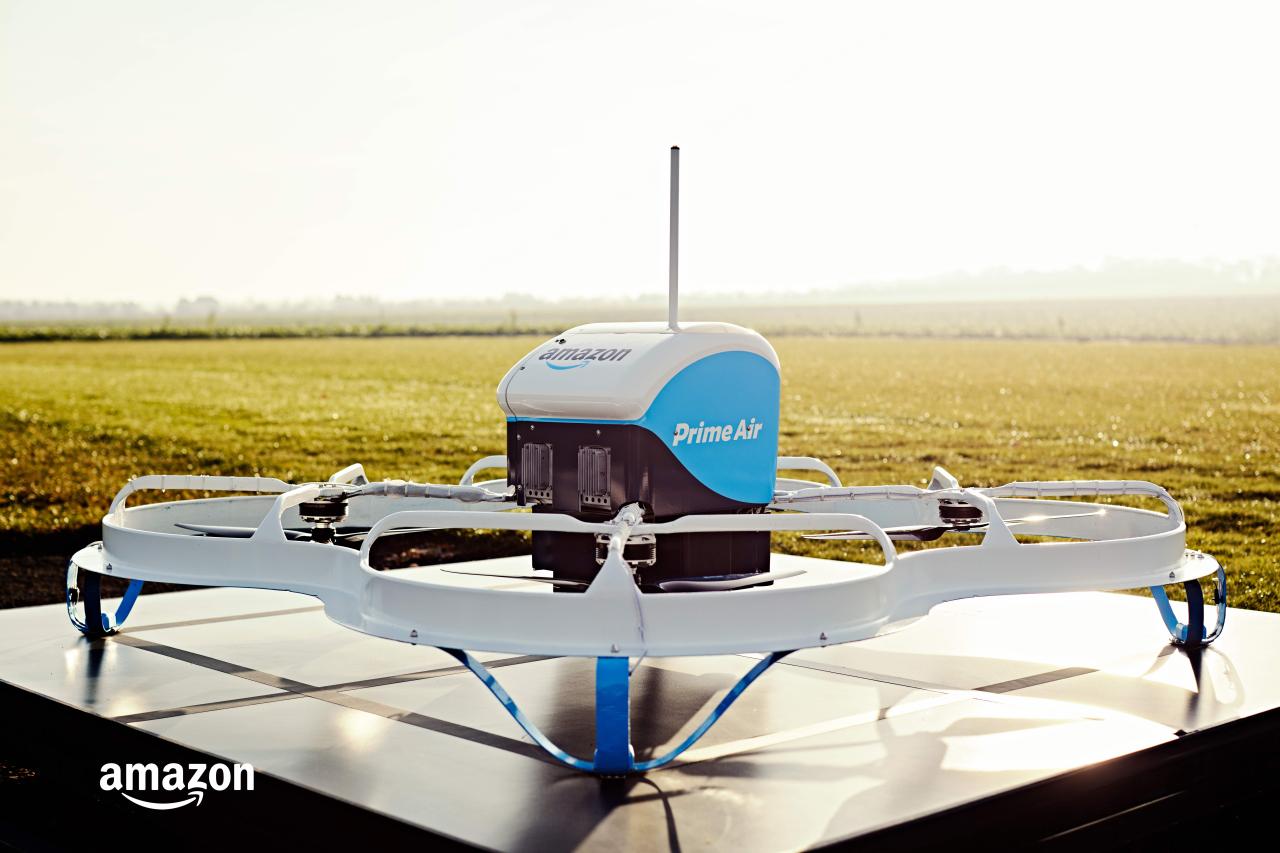
Amazon’s drone delivery program, while offering speed and efficiency, raises important environmental questions. We need to carefully consider the impact of these aerial vehicles on our planet, weighing the potential benefits against the potential drawbacks. This analysis will examine the environmental footprint of drone deliveries, comparing them to traditional methods and exploring ways to mitigate negative impacts.The environmental impact of drone deliveries is multifaceted, encompassing fuel consumption, noise pollution, and carbon emissions.
Electric drones, while promising, still require electricity generation, which may rely on fossil fuels depending on the source. Furthermore, the manufacturing of drones and their batteries contributes to environmental burdens. The increased air traffic, though potentially less than traditional ground vehicles, adds to noise pollution, particularly in residential areas. While the total carbon emissions per package might be lower than truck deliveries for short distances, the overall environmental impact depends heavily on the scale of the operation and the energy sources used.
Fuel Consumption and Emissions
Drone fuel consumption varies significantly depending on drone size, battery technology, and flight distance. Larger drones carrying heavier packages consume more energy. The carbon footprint associated with drone deliveries is directly tied to the energy source used to charge the batteries. If renewable energy sources like solar or wind power are used, the environmental impact is considerably reduced.
However, reliance on fossil fuels for charging significantly increases the carbon footprint. For instance, a study comparing a single drone delivery to a delivery by a small van might show a lower carbon footprint for the drone for short distances, but this advantage diminishes as distance increases, especially if the drone relies on non-renewable energy.
Noise Pollution
The whirring sound of drone propellers can be a significant source of noise pollution, particularly in densely populated areas. This noise can disrupt residents’ peace and quiet, potentially leading to health issues related to stress and sleep deprivation. The frequency and intensity of the noise will depend on the number of drones operating in a given area, the type of drone, and the time of day.
Imagine the cumulative noise of multiple drones taking off and landing near a residential area – the impact could be considerable. Mitigation strategies such as optimized flight paths and noise-reducing technologies are crucial to minimize this effect.
Comparison of Environmental Footprints
Consider a visual representation: A simple bar graph could effectively illustrate the environmental footprint. One bar would represent the carbon emissions per package for a typical truck delivery route (including fuel consumption and vehicle manufacturing). Another bar would represent the carbon emissions per package for a drone delivery over the same distance, assuming different energy sources for charging (one bar for fossil fuels, another for renewable energy).
A third bar could illustrate the noise pollution impact, represented by a scale of decibels or a qualitative measure (low, medium, high). This comparison would clearly show the relative environmental advantages and disadvantages of each delivery method, highlighting the importance of sustainable energy sources for drone operations.
Conclusion
Amazon’s drone delivery program represents a significant leap forward in logistics and technology. While challenges remain in areas such as regulation, infrastructure, and public acceptance, the potential benefits—from faster delivery times to reduced environmental impact—are undeniable. As the program continues to expand and evolve, it’s crucial to monitor its progress, address concerns proactively, and anticipate the broader societal implications of this transformative technology.
The future of delivery is in the air, and it’s changing faster than you might think.
FAQ Compilation
How much does Amazon drone delivery cost?
Currently, Amazon drone delivery is integrated into standard Prime shipping; there’s no additional charge.
What if my drone delivery is damaged?
Amazon’s standard return and refund policies apply to drone deliveries.
Are there weight restrictions for drone deliveries?
Yes, there are weight and size limits on packages eligible for drone delivery. These vary depending on the drone model and operational parameters.
How can I opt out of drone delivery?
Amazon’s system typically determines eligibility for drone delivery based on your location and order. While you can’t directly opt out, ensuring your address is accurately registered helps avoid unexpected drone deliveries.
